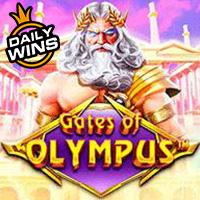


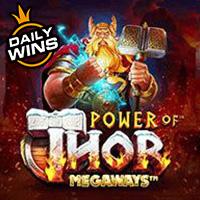
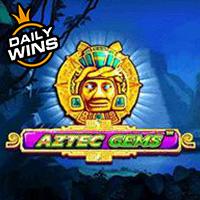
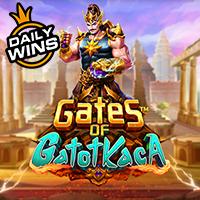


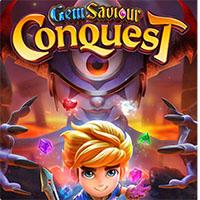

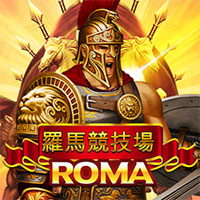



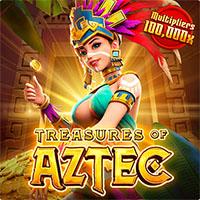



1. Introduction: Unveiling the Concept of Hidden Gems in Human Culture
Throughout human history, the idea of hidden gems has served as a metaphor for discovering valuable knowledge, symbols, or innovations concealed beneath the surface of surface appearances. These hidden elements can be ancient symbols embedded in myths, cultural practices, or artifacts that carry deeper meanings, as well as modern innovations inspired by those timeless symbols. Recognizing and understanding these hidden gems enhances our appreciation of cultural continuity and fuels creative progress.
This article embarks on a journey—from ancient symbols that encoded complex belief systems to contemporary innovations that reflect these enduring themes. By exploring how hidden symbols and treasures have shaped human thought, we gain insight into the ongoing quest for knowledge and discovery.
Mythology as a Repository of Hidden Knowledge
From Myth to Modern Innovation
Cultural Legends and Hidden Treasures
The Role of Hidden Gems in Innovation
Symbols, Technology, and Human Psychology
Ethical and Cultural Implications
The Journey from Ancient to Modern
2. The Power of Symbols: How Ancient Cultures Encoded Hidden Meanings
Ancient societies relied heavily on symbols to communicate complex ideas, spiritual beliefs, and social hierarchies. These symbols often served as a language beyond words, encapsulating cultural values and divine authority. For example, symbols could be seen as a means to preserve secrets or impart hidden knowledge that was accessible only to initiates or those with specific interpretative skills.
Case Study: Zeus as a Symbol of Divine Authority in Greek Mythology
Zeus, the king of gods in Greek mythology, exemplifies how a mythological figure functions as a symbol of power and divine legitimacy. His lightning bolt was not merely a weapon but a sign of his authority, and his depiction conveyed complex notions of sovereignty, justice, and cosmic order. Such symbols reinforced societal hierarchies and provided a shared cultural framework that persists even today in various forms.
The Influence of Ancient Myths and Symbols on Contemporary Culture
Modern storytelling, branding, and even political iconography often draw from these ancient symbols. For instance, the use of lightning bolts in logos or political imagery echoes Zeus’s emblem of authority. These symbols evoke subconscious recognition and lend a sense of gravitas rooted in millennia of cultural symbolism.
3. Mythology as a Repository of Hidden Knowledge
Myths serve as repositories of collective memory, preserving cultural values, moral lessons, and esoteric knowledge. They often contain allegorical meanings that require careful interpretation to unlock their deeper significance. Such stories are not mere entertainment but encoded instructions or insights passed through generations.
Example: Hesiod’s Recording of Zeus’s Myths in the 8th Century BCE
Hesiod’s Theogony is a seminal work that consolidates Greek mythological traditions, presenting a genealogy of gods that reflects both cosmological order and societal structure. The myths about Zeus and his progeny encode themes of governance, moral authority, and divine justice, serving as a framework for understanding human and divine interactions.
The Interpretative Challenge: Uncovering Deeper Meanings Behind Mythological Stories
Deciphering mythological narratives involves analyzing allegories, symbols, and cultural contexts. For example, Zeus’s thunderbolt can symbolize enlightenment or divine wrath, depending on interpretation. This interpretative process reveals hidden layers of meaning that influence cultural and spiritual perceptions today.
4. From Myth to Modern Innovation: The Evolution of Hidden Gems
Ancient symbols and myths continue to inspire modern design, branding, and technological innovations. They serve as a wellspring of creative ideas, fostering a sense of continuity between past and present.
How Ancient Symbols Inspire Modern Design and Branding
Companies often incorporate symbols rooted in ancient mythology to evoke certain emotions or associations. The lightning bolt, for instance, is used in logos to suggest energy, power, and innovation. Such symbolism taps into collective subconscious recognition, enhancing brand identity.
The Case of Le Zeus: A Contemporary Example of Myth-Inspired Innovation
Modern products like le zeus play exemplify how myth-inspired themes are integrated into contemporary innovations. This product embodies the timeless allure of mythological symbolism, translating it into a tangible experience that appeals to curiosity and the desire for discovery.
The Transition from Symbolic Representation to Tangible Modern Products
Designers and entrepreneurs leverage ancient symbols to create products that resonate on a subconscious level, fostering engagement and emotional connection. This evolution demonstrates how hidden gems from history adapt to modern contexts, maintaining their relevance and power.
5. Cultural Legends and the Search for Hidden Treasures
Folklore and myths about hidden treasures have captivated human imagination for centuries. Tales of leprechauns guarding pots of gold or buried treasures create a sense of adventure, mystery, and hope. These stories often symbolize the pursuit of knowledge, prosperity, or spiritual enlightenment.
The Psychological and Cultural Significance of Treasure Myths
Treasure myths serve as metaphors for discovering inner potential or unlocking hidden aspects of oneself. They also reinforce cultural values of perseverance, luck, and discovery. Such stories motivate exploration—both literal and metaphorical—driving innovations and quests in various fields.
Modern Adaptations: Treasure Hunts, Augmented Reality Games, and Symbolic Quests
Contemporary technology has transformed treasure hunting into interactive experiences, such as augmented reality games that blend digital and physical worlds. These activities mirror ancient quests for hidden knowledge, making the process of discovery engaging and accessible.
6. The Role of Hidden Gems in Innovation and Creativity
Uncovering and interpreting hidden elements—whether symbols, stories, or cultural artifacts—fosters innovation by inspiring new ideas and approaches. Creative industries frequently draw upon ancient motifs to craft unique designs that evoke familiarity while offering novelty.
Examples of Hidden Features in Modern Products, Including Le Zeus
Many modern devices and products incorporate hidden features or subtle design elements that enhance user experience, often inspired by symbolic motifs. For example, some gaming consoles hide easter eggs or secret modes that reward curiosity—paralleling the idea of discovering hidden gems from history.
The Importance of Curiosity and Exploration in Unlocking New Potentials
Encouraging a mindset of exploration leads to breakthroughs in technology and design. Curiosity-driven discovery allows creators to tap into cultural and historical symbols, transforming them into innovative solutions that resonate on a deeper level.
7. Non-Obvious Depths: The Intersection of Symbols, Technology, and Human Psychology
Subconscious recognition of symbols influences consumer behavior significantly. Brands that embed ancient symbols or archetypes can evoke trust, excitement, or curiosity without overt messaging.
How Subconscious Recognition of Symbols Influences Consumer Behavior
Studies show that symbols activate neural pathways associated with emotions and memory, guiding preferences and loyalty. This psychological effect explains why brands incorporate familiar motifs—like the lightning bolt—to forge emotional bonds.
The Use of Ancient Symbols in Branding and Marketing Strategies
Harnessing symbols from mythology enhances brand storytelling and identity. For example, the use of thunderbolts or divine imagery can suggest strength, innovation, or authority, aligning with consumer aspirations.
Psychological Theories Explaining the Allure of Hidden Treasures and Secrets
Theories like Carl Jung’s collective unconscious suggest that archetypes and symbols from ancient myths are embedded in human psyche, creating a universal allure for hidden secrets and treasures. This drives cultural fascination and continual rediscovery.
8. The Ethical and Cultural Implications of Revealing Hidden Knowledge
While uncovering hidden gems can be enlightening, it must be approached with respect for cultural origins and sensitivities. Misappropriation or oversimplification risks distorting meanings or offending communities.
Respecting Cultural Symbols and Avoiding Misappropriation
Practitioners and companies should ensure that their use of cultural symbols is contextually appropriate, ideally consulting with cultural custodians or experts. This promotes respectful representation and preserves cultural integrity.
The Balance Between Educational Exploration and Commercialization
Educational efforts should prioritize authenticity and sensitivity, avoiding commodification that trivializes profound symbols. When done responsibly, commercial products can serve as gateways to deeper understanding.
Case Considerations: Responsible Use of Mythological References in Modern Products
Brands like le zeus play exemplify blending myth-inspired themes with respect, emphasizing the importance of cultural literacy and ethical storytelling in modern innovation.
9. Conclusion: Embracing the Journey of Discovery from Ancient to Modern
Understanding the significance of hidden gems—from ancient symbols to cutting-edge innovations—enriches our perspective on human creativity and cultural continuity. These discoveries inspire curiosity, critical thinking, and a deeper appreciation of the interconnectedness of past and present.
“The quest for hidden knowledge is a timeless pursuit, fueling innovation and cultural understanding across generations.”
Modern examples, such as le zeus play, illustrate how ancient principles continue to inspire breakthroughs. By embracing exploration and respecting cultural origins, we unlock new potentials and deepen our connection to the enduring legacy of human ingenuity.
